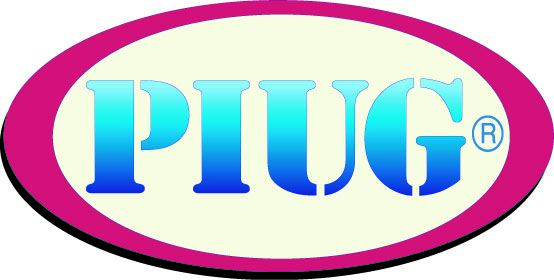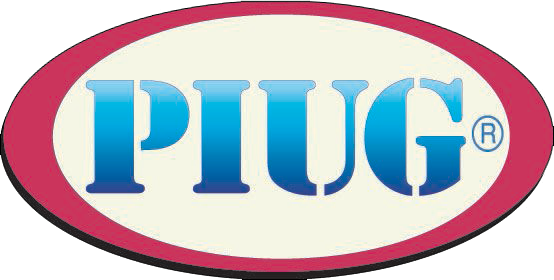ProgramTuesday, February 28, 2023
Meeting Abstracts
Abstract One of the few bright spots of the COVID-19 pandemic has been the speed with which mRNA vaccines were developed against it. For example, Moderna developed is mRNA-1273 vaccine within days of receiving the genetic sequence of the SARS-CoV-2 virus that causes COVID-19, and was ready for human trials within two months. Pfizer/BioNTech developed its COVID-19 mRNA vaccine, BNT162b2, with similar rapidity. Now, three years into the COVID-19 pandemic, Moderna has filed patent infringement suits against Pfizer in the United States and Germany, and has itself been sued by Arbutus for alleged infringement of patents related to the nanoparticles used to convey the mRNA component to the body’s cells. This presentation will discuss technical aspects of COVID-19 mRNA vaccines, including the simultaneous convergence of technologies that made them possible, as well as the explaining why this convergence complicates both current lawsuits and future patent strategies. Biography Thomas Ehrich is Counsel at RMMS LLP, a Chicago-based law firm that specializes in patent litigation and counseling for clients in the pharmaceutical and biotechnology sectors. Prior to this, he worked with Cambia in Australia to develop the biological sequence analytic tools for the Lens (www.lens.org). He has a PhD in molecular biology from Washington University in St. Louis, and a law degree from Northwestern University in Chicago.
Abstract Prior art searching is a critical part of patent examination to ensure that the best available prior art is considered during examination. Applying the best available prior art leads to high quality patents with claims that clearly define over the prior art and promote innovation. Searching in cellular and peptide vaccines and cellular therapy areas is similar to searching in other patent areas. Based on the broadest reasonable interpretation of the claims, patent examiners design search strategies, including text and classification, to search multiple non-patent and patent literature databases for prior art. Sequence searches using an internal United States Patent and Trademark Office (USPTO) sequence database are performed when needed. Overall, every application is thoroughly searched to find the best available prior art and to determine the level of skill in the art so that the examiner can make informed patentability determinations. Biography Julie Wu received her BS in Pharmacology from SUNY Stony Brook in 1999, Ph.D. in Pharmacology from Yale University in 2004, and completed her postdoctoral training at the National Institutes of Health (NIH). She joined the USPTO in 2012 as a patent examiner, where she examined patent applications on immunotherapy for cancer, recombinant antibody, and CRISPR gene editing. In 2019, she was promoted to Supervisory Patent Examiner in the technology area of immunotherapy for cancer and recombinant antibody.
Abstract The worldwide in vitro diagnostic market is expected exceed $127 billion in 2022. Over the course of the last three years, there was a renewed understanding of the importance of diagnostic inventions in controlling and managing the spread of deadly viruses, such as COVID-19. Intellectual property protection for these inventions is critical to provide the incentive needed for companies to spend the millions of dollars needed to develop such tests, not only to protect against deadly viruses, but also to diagnose and monitor the treatment of diseases such as HIV, heart disease, Alzheimer’s disease and much more. This presentation will examine the types of patent claims available for diagnostic inventions in various jurisdictions and challenges associated with getting such claims. Biography Lisa Mueller is a shareholder at Casmir Jones. For over twenty-five years, Lisa has provided strategic counsel on complex patent issues to clients in the plant, food, pharmaceutical, biopharmaceutical, biotechnology, diagnostic, and chemistry sectors. She brings an in-depth knowledge and extensive experience to her work advising clients on the global patent protection, freedom to operate and validity of the products they aim to produce and distribute. Lisa also edited and authored a chapter in the book entitled, “Global Patent Protection and Enforcement of In Vitro Diagnostic Inventions” published by Wolters Kluwer, available November 2019 and the host of the podcast, AUTM in the AIR, a weekly podcast which interviews the leaders in Technology Transfer. Lisa is also involved in a number of equity, diversity and inclusion initiatives, including the creator and instructor of the Casimir Jones Life Sciences Patent Academy and the Chair Elect of the AUTM Equity, Diversity and Inclusion Committee.
Anne Marie Clark, CAS IP Services Abstract Short, inhibitory RNAs (siRNA) can be challenging to search due to their size and chemical modifications. While procedures have been developed to maximize siRNA sequence searching based on the sequence length, processes for searching siRNA by chemical modifications are still being developed. Chemically modified siRNAs are increasing important and can be claimed by sequence and/or chemical modification patterns, without mention of the siRNA target. Due to the various ways siRNAs can be claimed and the different search procedures involved, performing FTO searches can be complex and time-consuming. This talk will cover the general considerations for siRNA searches, but will focus on the new searching techniques being developed for siRNA and other short sequences with chemical modifications. Utilizing the unique data on chemically modified siRNAs available in CAS REGISTRY, methods for searching and analyzing siRNA chemical modification patterns using KNIME and Microsoft Excel will be described. Biographies Anne Marie Clark is a Senior Scientist with CAS IP Services, part of CAS, a division of the American Chemical Society. Prior to joining CAS in 2016, she was an independent searcher, a Manager of Intellectual Property with Bausch & Lomb, an Associate Director-Information Science at Pfizer, and an Information Scientist with CAS. She has a Ph.D. in biophysical chemistry from University of Louisville, a Drug Development certificate from Temple University and a BS in chemistry from Rochester Institute of Technology. In her free time, she mentors FIRST Robotics teams, gardens and explores the Pacific Northwest. Barbara Miller is currently a Patent and Scientific Analyst in the Amgen IP Law group. Prior to joining Amgen in 2017, she was a Patent and Scientific Analyst at the Novartis Institutes for Biomedical Research (NIBR) in Cambridge, MA, and an Information Scientist at Pfizer in Groton, CT. She has a PhD in Biological Sciences from Emory University in Atlanta, GA, a MS in Regulatory Affairs and Quality Assurance from Temple University, and a BS in Chemistry from Rhodes College in Memphis, TN. In her free time, she enjoys reading, traveling, cycling, yoga, and finding unusual restaurants and shops.
Abstract The technology and information needed to enable the production of nutritious food for our expanding global population is growing exponentially. Tools from DNA/genome sequencing to Transgenics have improved our ability to produce more food in a smaller area. Based on this presentation you will understand the fundamentals of plant breeding and some of the technologies currently driving an era of incredible innovation in food production. You will further understand the basic strategies for the claiming and searching these technologies. Biography Matthew was raised on a small dairy farm in Idaho, where he learned a love for nature and sciences. This led him first to complete a Ph.D. in biochemistry and then to a, so far, 24-year career as an intellectual property professional. For the past 17 years he has been with Bayer (via Monsanto) where his work has focused on protecting and licensing intellectual property for agriculture-related inventions.
Abstract The use of animals in science is a subject of controversy, it contributes to R&D new drugs and vaccines. There are methods to seek the use of alternatives and less cruel methods to increasingly reduce the use of animals in projects. Among these alternative methods there is a device known as organ-on-a-chip, consisting of a microchip containing layers of cells from a particular organ that are exposed to other cells, substances in general, or as drugs: even pathogens, such as fungi, to study and explore how they can occur between them. This is a newer technology which currently offers the possibility of simulating the functioning of various human or animal organs such as the heart, lungs, liver, kidneys, intestines, bone marrow, etc. The present study was carried out in October 2022, using the Clarivate Analytics' Derwent Innovation Index (DII) database, applying the term “organ-on-a-chip”. We found 51 patent documents where the first patent specification was filed with the USPTO in 2008 by inventor Uwe Marx, seeking protection for the following claim categories: "self-contained organ-on-a-chip device" (claims 1 a 32), "method of manufacturing a self-contained organ-on-a-chip device" (claim 33), "supply unit for receiving the self-contained organ-on-a-chip device" (claims 34 to 37), "method of manufacturing" (claims 38 to 42), "method of testing the effect" (claims 43), and "use of the self-contained organ-on-a-chip device" (claims 44). The most recent organ-on-a-chip patent application was filed Feb. 12, 2021, by Univ California and claims, "A multilayer organ-on-a-chip system" (1 to 17) and "A method of screening drugs or agents" (18 to 20). We conclude that the main applicants are universities, that Brazil may have a competitive advantage in this field since few patent applications have been filed in this field, and that the main feature of the claims includes devices and methods for drug discovery. Biographies Christoph Milewski holds a degree in Law from the Federal University of Rio de Janeiro (UFRJ) (Brazil) and in Biology from the Baptist University of Minas Gerais (FBMG) (Brazil). He has experience in law and management. He has a specialization in Public Law, Management of Organizations in Health Care Science and Technology, Clinical Immunology and Innovation and Entrepreneurship from Harvard University. He holds a Master's degree in Administrative Law from the Faculty of Law of the Fluminense Federal University (UFF) and is a Doctorate Student in Management, Research and Development in the Pharmaceutical Industry from the Professional Graduate Program of the Institute of Technology in Pharmaceuticals, Oswaldo Cruz Foundation (Fiocruz). He is currently the Director of the Institute of Science and Technology of Biomodels of Fiocruz. Wanise Barroso holds a PhD in Information and Communication Sciences by Université de Toulon et du Var (France). Head Researcher in Health at Fundação Oswaldo Cruz (Fiocruz). She has been working for more than 40 years in Competitive Intelligence, Industrial Property and Management of Technological Innovation, mainly in the areas: patent, database, public domain, technological surveillance and patent oppositions. Vice-director of the Institute of Science and Technology of Biomodels of Fiocruz. Coordinator of the Professional Postgraduate Program in Management, Research and Development in the Pharmaceutical Industry of Farmanguinhos/Fiocruz.
Abstract The session will focus on the mechanics of building a "product dashboard with Microsoft Power BI. While the example used will be a drug product, the principles and techniques described in the session can be applicable to building any product dashboard for any other industry. Free and open resources to build the dashboard like from National Center of Biotechnology Information (NCBI), World Intellectual Property Organization (WIPO), European Patent Office and more. Biography Christine (Chrissy) Geluk is the Principal, and Founder of Librarian At Your Service LLC. With over twenty (20) years experience in information science & libraries especially in the pharmaceutical industry, Chrissy has demonstrated excellence in computer programming skills like XHTML/HTML5, CSS, WordPress, SharePoint, Power BI , JavaScript and still learning more in the use of different search systems like STN, Questel Orbit, Dialog, LexisNexis, TotalPatent, and Crunchbase. She has successfully negotiate advantageous contracts with vendors and arranged end-user training to support adoption of services and systems. Chrissy earned her undergraduate degree in mathematics from Fordham University (#AlwaysaRAM) and her graduate degree from Simmons.
|
 Search
Search Community
Community Job Board
Job Board

